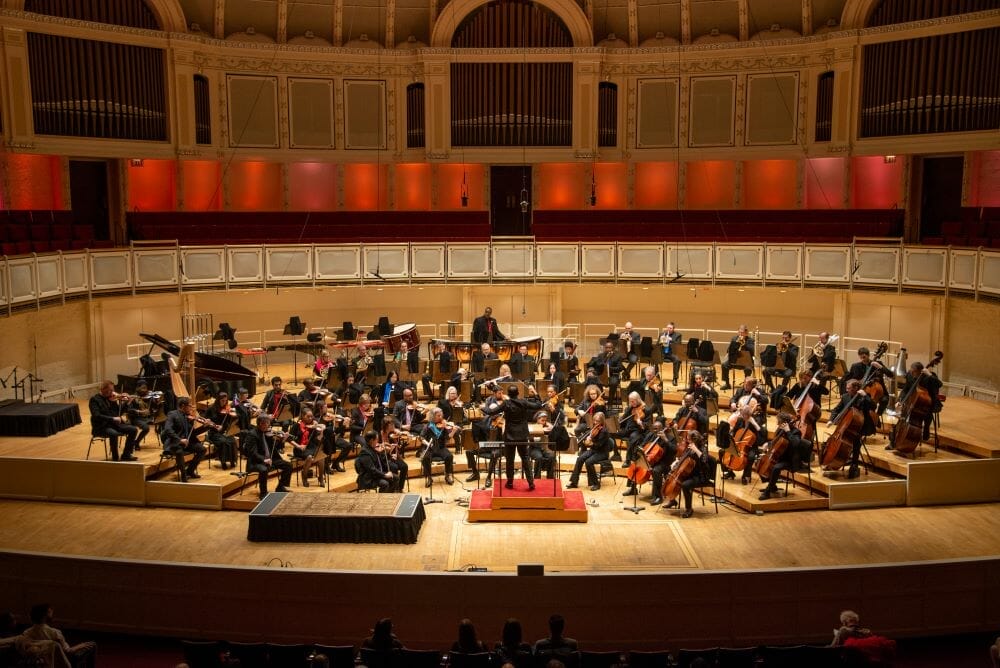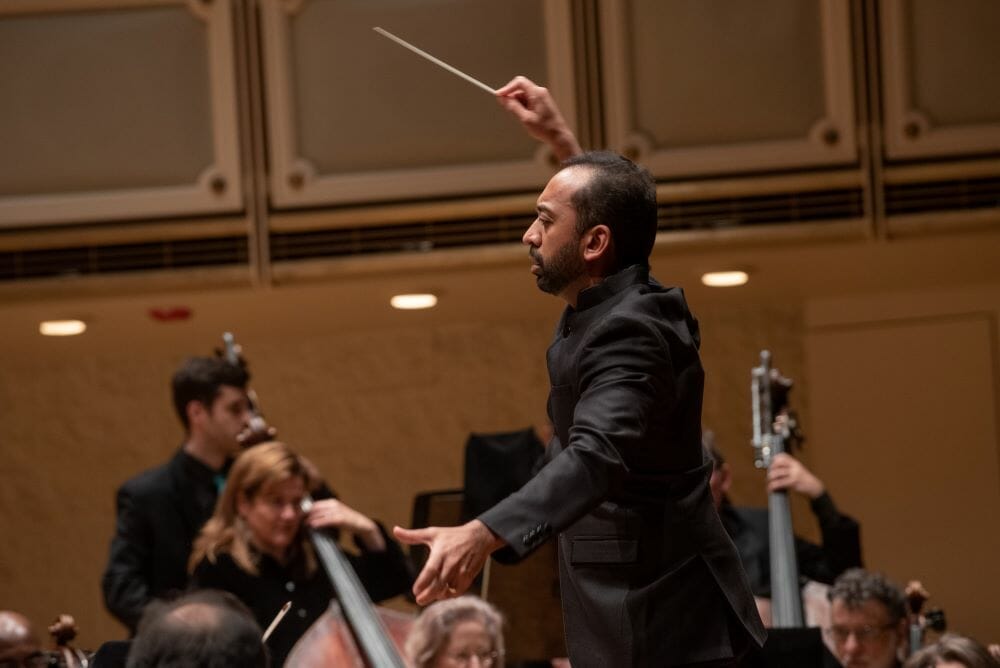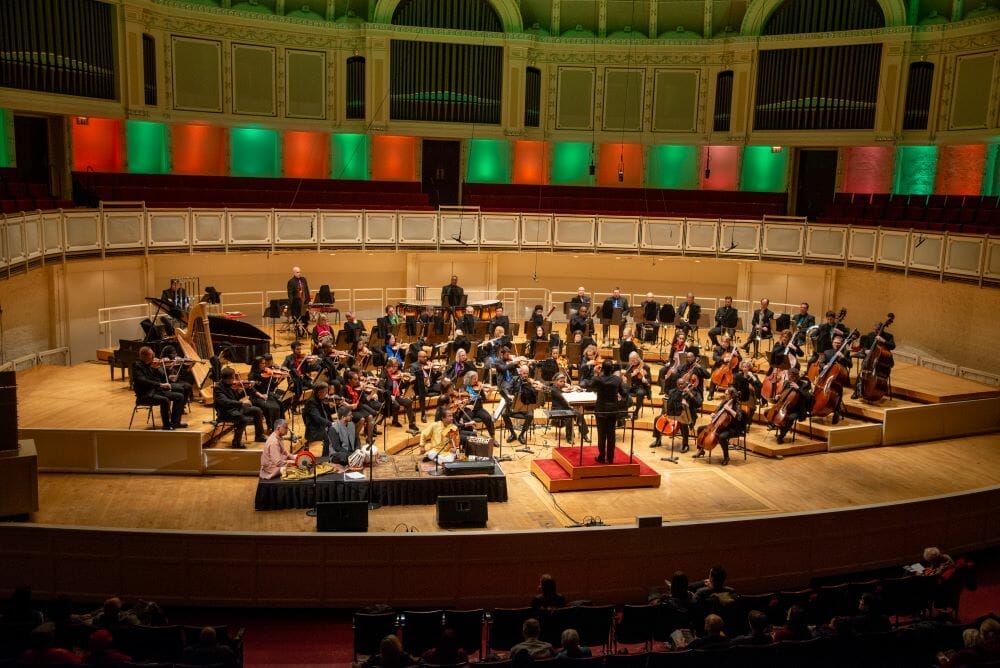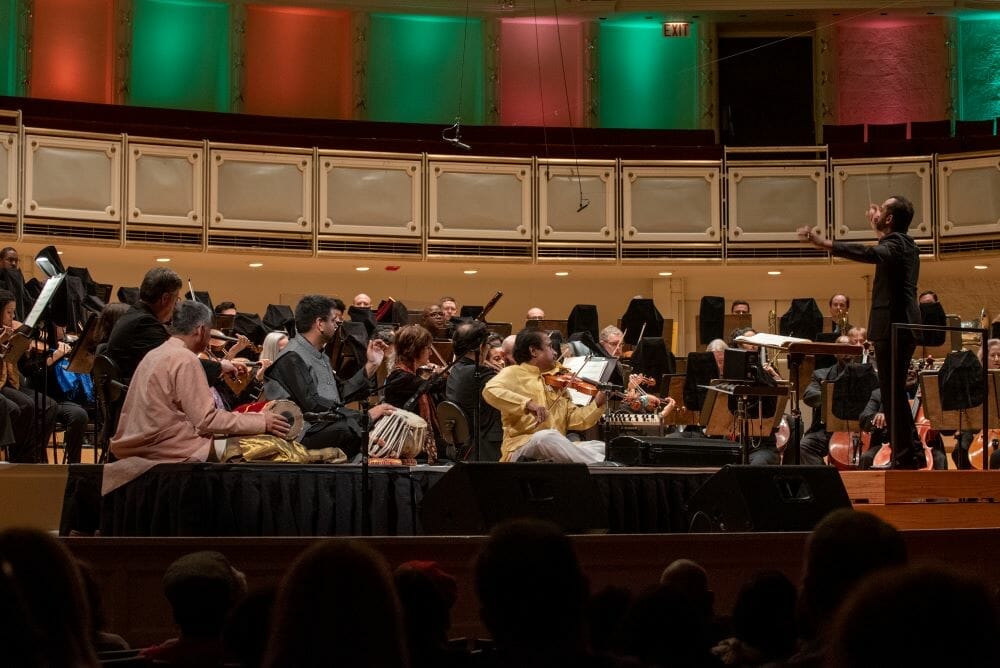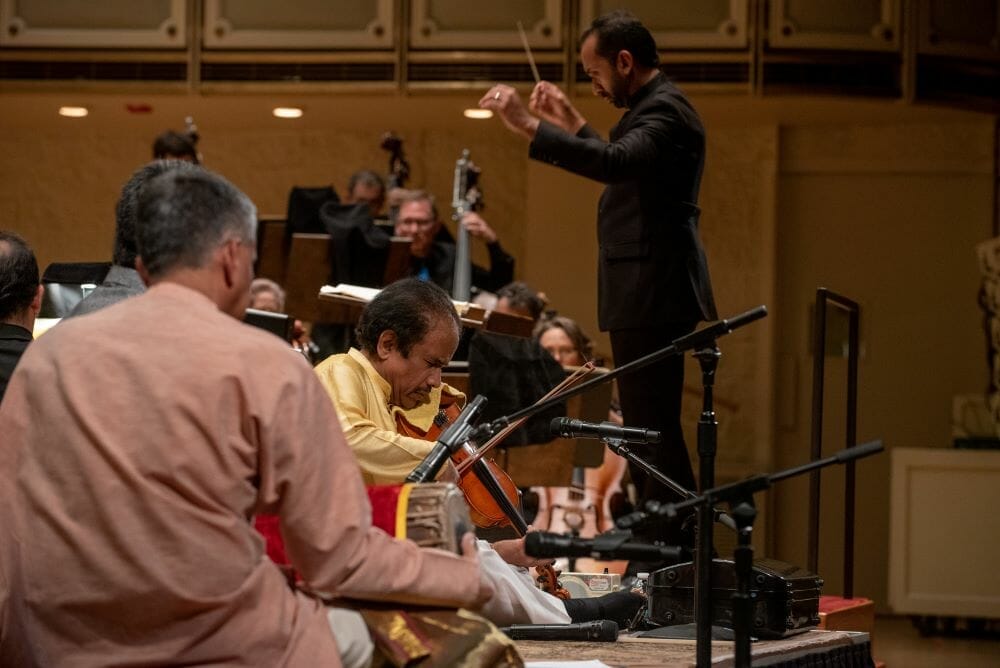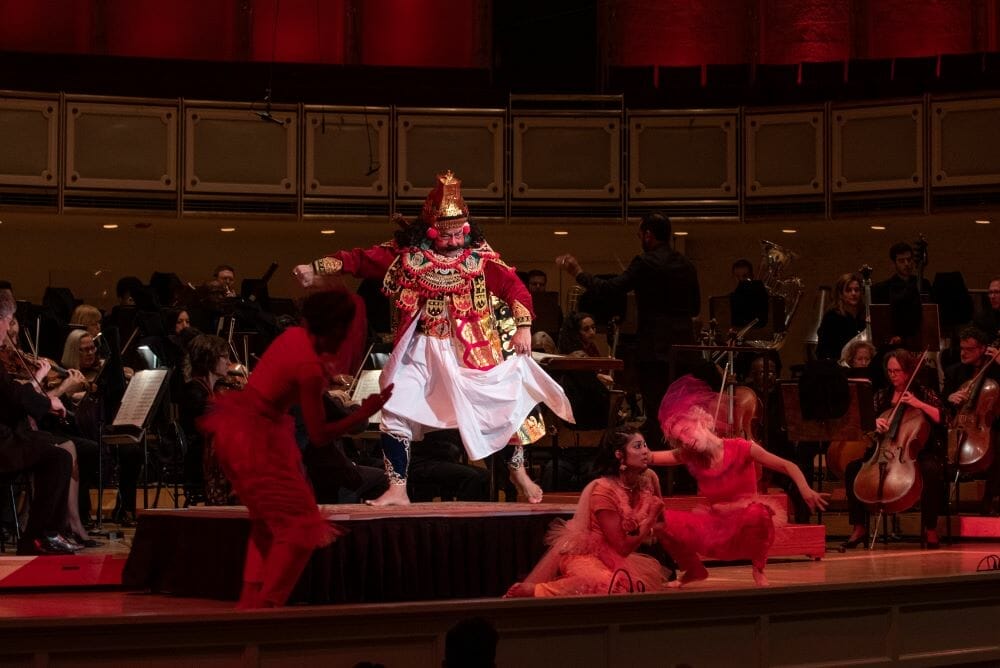Click here to read more Picture This Post Chicago Sinfonietta stories.
Chicago Sinfonietta marked the freezing, shortening days with a burst of light this year. At concerts that fell shortly after the Hindu festival of Diwali, the classical orchestra performed works with a theme of good triumphing over evil, in the interior conflict of the self as well as in epic struggles. Featuring guest conductor Sameer Patel, the Sinfonietta teamed up with Mandala Arts dance ensemble to tell the story of the Ramayana,as well as a tale of political persecution from the Napoleonic era, and to welcome South Indian-western violin fusionist Dr. L. Subramaniam.
A Taste of Operatic Grandeur
Despite the optimistic tone of the lineup, it started off with Romantic moodiness. The first of the three pieces was Leonore Overture No. 3, one of several overtures Ludwig von Beethoven wrote for his only opera, Fidelio. We learn that Beethoven never settled on a definitive version of Fidelio, and ultimately rejected this overture because its length caused it to overshadow the opera, but that made it a favorite among orchestras. It was evident,to this writer, at the Naperville performance in Wentz Hall on November 9, why Patel is such an engaging director. His dramatic flourishes provided nearly as much visual dynamism as an actual abbreviated performance of the opera would have. Beethoven was correct that the piece itself neatly summarizes the entire story, with its ominous, plodding beginning contrasting with the trilling trumpets that herald the heroine’s rescue of her beloved. This was chronologically the earliest piece at the concert to be written, and wasthe most accessible and straightforward.
A Tightly Focused, Atmospheric Ramayana
Igor Stravinsky’s The Firebird Suite was composed in the early twentieth century to tell a Russian folktale in ballet form, using the complex leitmotifs and skewed discordance of modernist music. Since his subject matter was of a prince rescuing a princess from a wizard, Patel and choreographer Ashwaty Chennat saw an opportunity to tell the story commemorated by Diwali. Blending south Asian tradition, including its iconic costume stylings for the demon king Ravan, with western pas de deux, the dance ensemble found nearly perfect parallel beats between the stories. Of course, Stravinsky’s Firebird is only about forty-five minutes long, while the Ramayana consists of hundreds of chapters and traditional performances of it can take as long as a month. But Chennat neatly elided it by emphasizing the dream aspects of the story, and building off Stravinsky’s eerie woodwind calls. The Wentz stage is not very large when already occupied by an orchestra, but a paring down of the epic to just five dancers allowed the choreography to suit the music.
Chicago Sinfonietta Welcomes a Unique Voice
The second half of the concert consisted of Shanti Priya in E, Ls 231, a violin concerto performed by its composer, L. Subramaniam. Describing this meditation on peace, Subramaniam elicits highly varied sounds from his instrument, sometimes times making it as plaintiff as a human voice, and at others blending seamlessly with its droning accompaniment. Subramaniam’s extremely fast finger movements during the adagio drew looks of fascination from the violinists in the Sinfonietta, whom he joined in with during the concerto’s dramatic climaxes. Throughout the piece, Subramaniam engages in call and response with the drummers, masterfully building and releasing tension around the central melody. In the third movement, the music’s shift to counterpoint between brass and woodwinds. It sounds much like asoundtrack to a Western movie as meditation gives way to ecstasy. It’s a thrilling conclusion, in this writer’s view, achieved in no small part thanks to the tendency of Subramaniam’s compositions to favor unity over harmony. This is a piece that feels true to its purpose to track a singular spiritual experience, once again making a sinfonietta feel as intimate as a chamber orchestra.
HIGHLY RECOMMENDED
Read more about Mandala Arts and Diwali here.
Photos by Chris Ocken Photography
About the Author: Jacob Davis

Jacob Davis has lived in Chicago since 2014 when he started writing articles about theatre, opera, and dance for a number of review websites. He is a graduate of the University of Illinois at Urbana-Champaign’s Department of Theatre, where he specialized in the history of modernist dramatic literature and criticism. While there, he interned as a dramaturge for Dance Heginbotham developing concepts for new dance pieces. His professional work includes developing the original jazz performance piece The Blues Ain’t a Color with Denise LaGrassa, which played at Theater Wit. He has also written promotional materials for theatre companies including Silk Road Rising.
Click here to find more Picture This Post articles by Jacob Davis.

